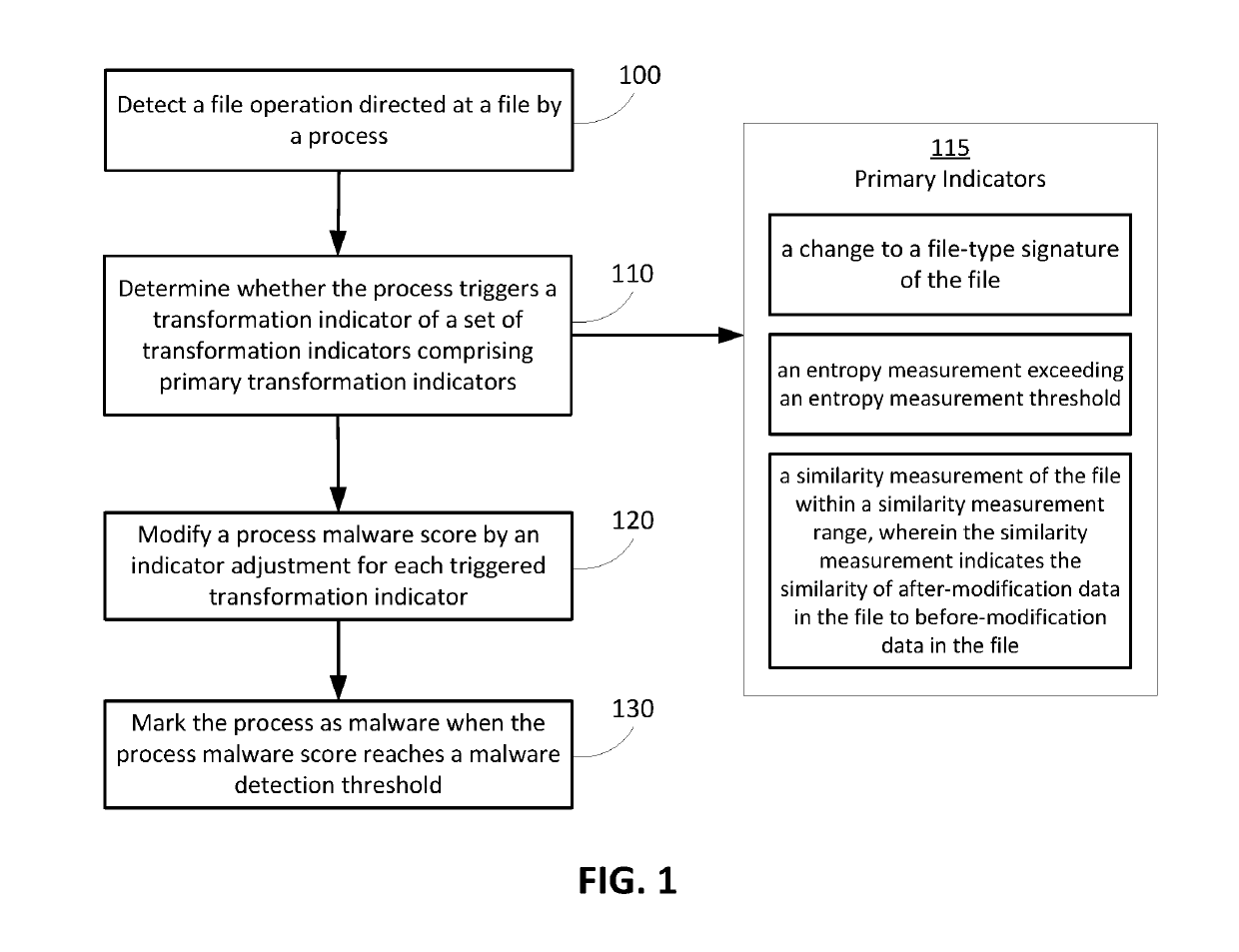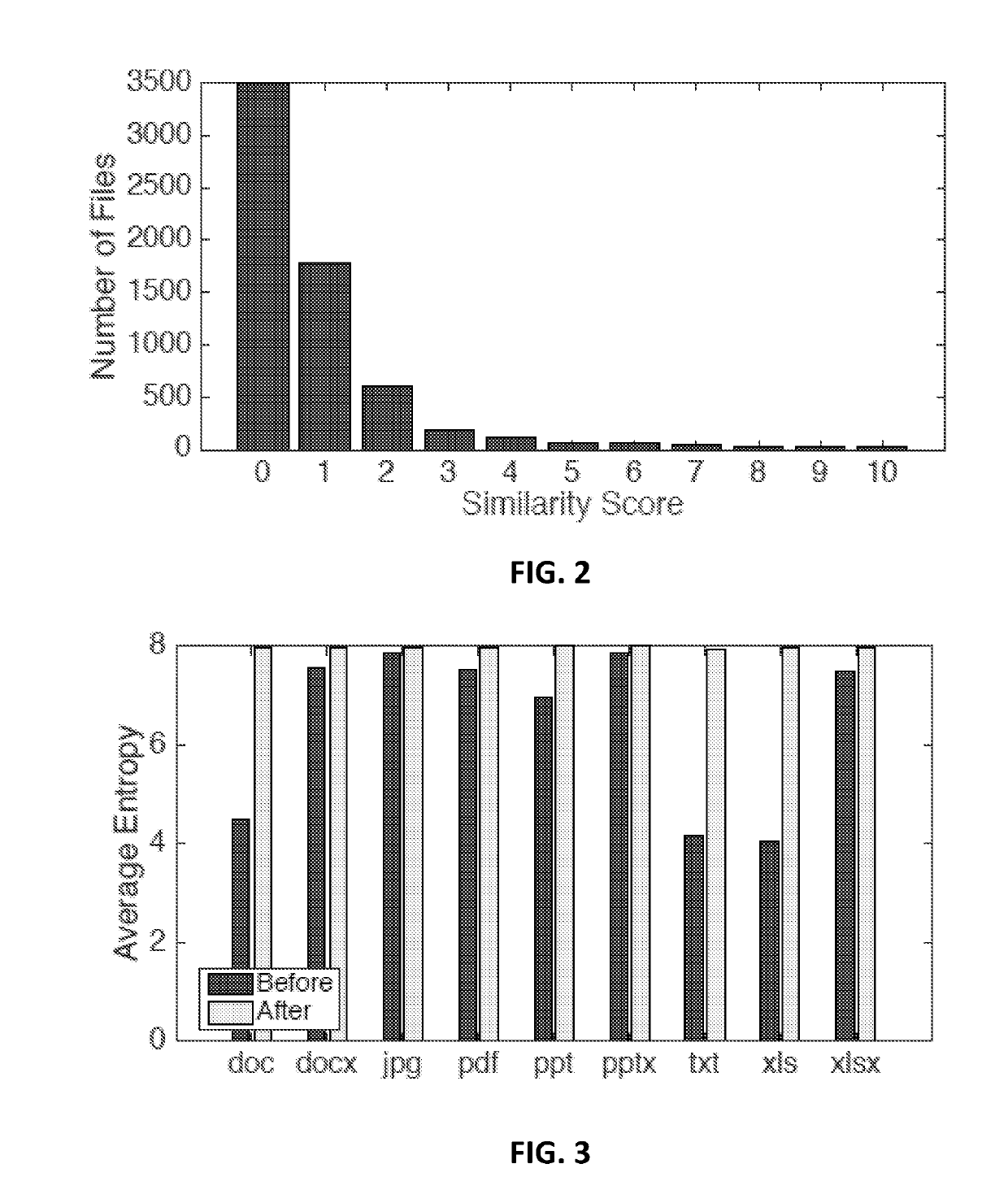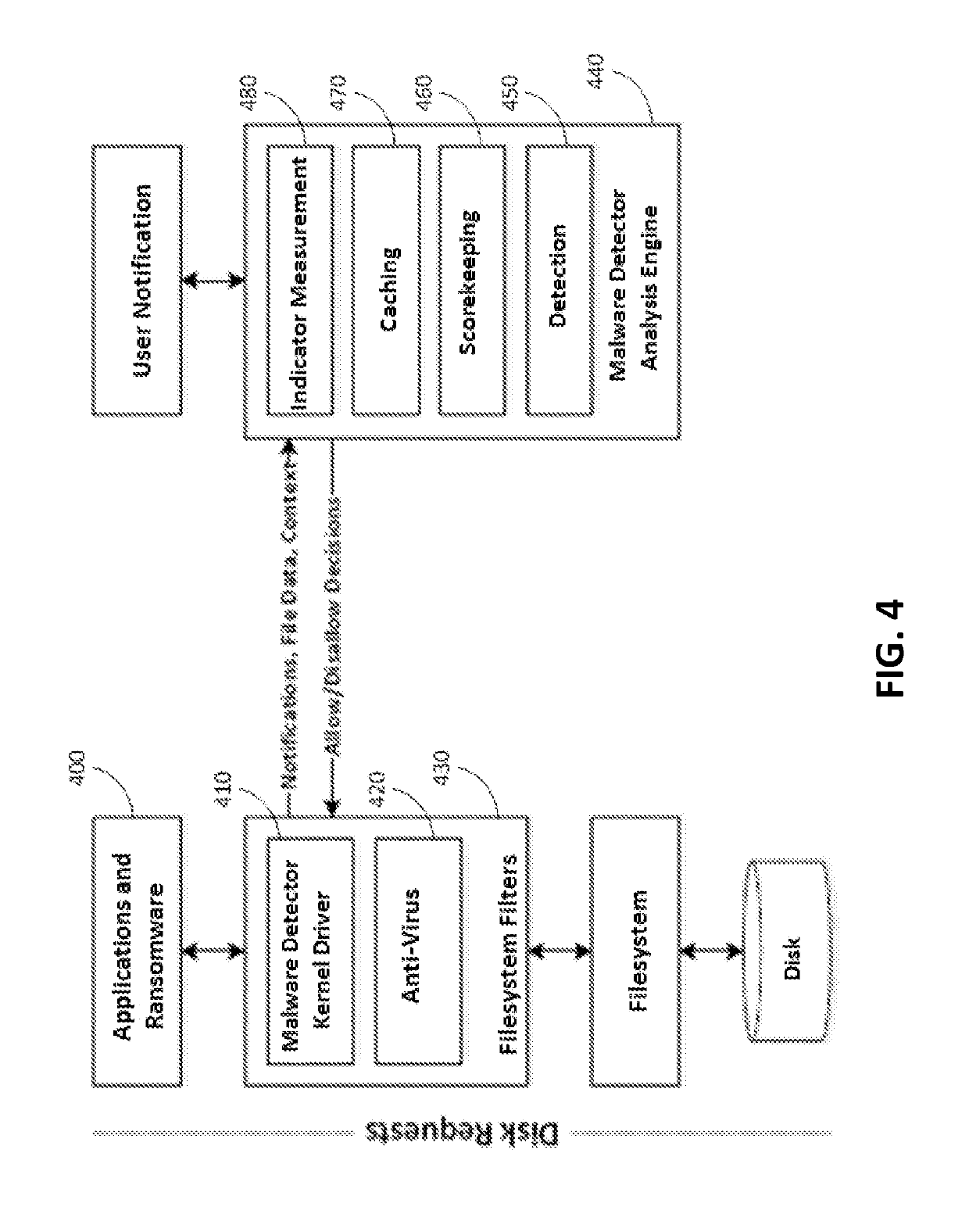Malware detection via data transformation monitoring
a data transformation and monitoring technology, applied in the field of malware detection via data transformation monitoring, can solve the problems of difficult to combat ransomware, difficult to distinguish operations performed by such malware from those of benign software, and easy to create or obtain malware, etc., to facilitate the bulk transformation of malware detection.
- Summary
- Abstract
- Description
- Claims
- Application Information
AI Technical Summary
Benefits of technology
Problems solved by technology
Method used
Image
Examples
Embodiment Construction
[0017]Generally, anti-malware products such as McAfee® VirusScan and Symantec® Endpoint Protection attempt to identify malware before it can start by comparing or matching the malware to known “signatures”. Signature matching analyzes applications based on known malware characteristics and flags programs that match previously observed intrusions. Over years of development, the common characteristics in modern malware signatures have made this technique for classifying known malware extremely accurate. However, a limitation of this approach is that malware that has not been previously observed is difficult to identify. Furthermore, recent research has shown that evading signature detection is possible with relative ease when the malware signatures used are too rigid [3, 7, 10, 11]. While combining multiple intrusion detection systems (IDS) suites using different techniques may provide some added accuracy [13], it is still possible to use automated malware packing techniques to evade ...
PUM
 Login to View More
Login to View More Abstract
Description
Claims
Application Information
 Login to View More
Login to View More - R&D
- Intellectual Property
- Life Sciences
- Materials
- Tech Scout
- Unparalleled Data Quality
- Higher Quality Content
- 60% Fewer Hallucinations
Browse by: Latest US Patents, China's latest patents, Technical Efficacy Thesaurus, Application Domain, Technology Topic, Popular Technical Reports.
© 2025 PatSnap. All rights reserved.Legal|Privacy policy|Modern Slavery Act Transparency Statement|Sitemap|About US| Contact US: help@patsnap.com



